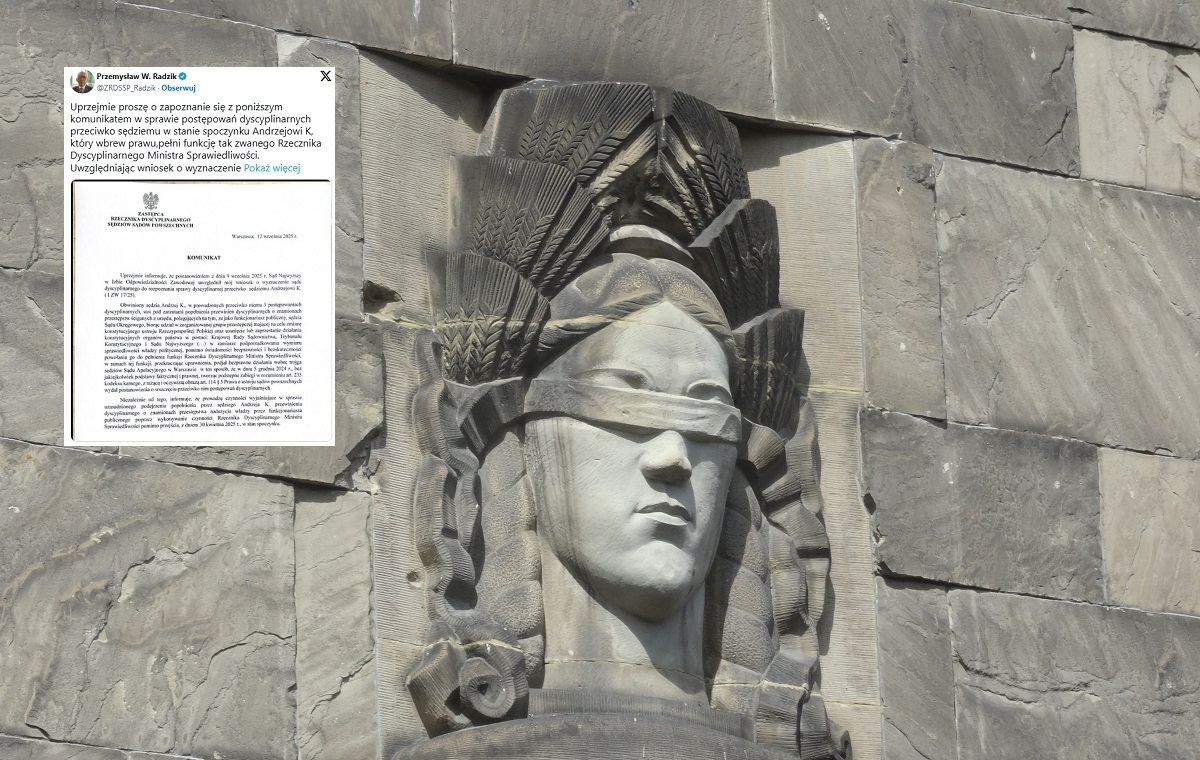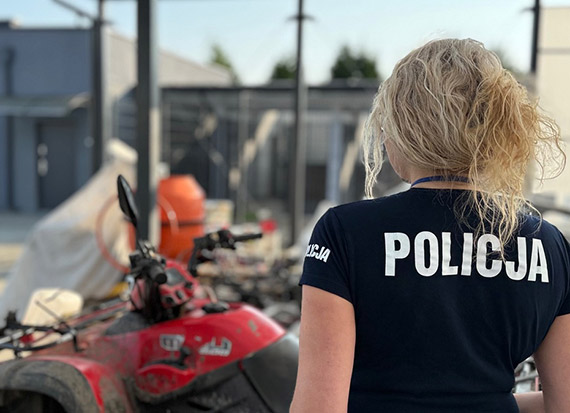Description of the facts
By judgement of 14.3.2022, VII K 793/21, the territory Court ruled against L.C. a punishment of 8 months of restrictions on freedom with the work to execute unpaid controlled work for social purposes of 30 hours per period and has committed to compensation for harm to the victim in the amount of PLN 500.
The appeal was appealed against by the suspect L.C.
District Court of W. by judgement of 23.8.2022, IV Ka 865/22, Legalis, acquitted the suspect L.C. from the act assigned to him.
The Court of Justice has brought an action against the Court of First Instance, alleging a gross and material infringement of procedural law, namely Article 413(1)(4) of the CRS and Article 413(2)(1) of the CRS.
The applicant requested the annulment of the decision in its entirety and the referral of the case for review in the appeal proceedings.
The ultimate Court, after examining the cassation brought by the prosecutor, annulled the contested judgement and referred the case to the territory Court of W. for re-examination.
Reasons for SN
According to the ultimate Court, the cassation brought by the prosecutor is justified in a clear sense.
The content contained in the description of the act attributed should correspond to the semantic content of all the characteristics defining the kind of crime and each mark of the kind of crime should be identified in the description of the act. Marks mark the boundaries of the area of criminalisation in abstract terms, while the intent of the criminal trial in the jurisdictional phase is to find whether the accused has fulfilled each of the synthetically recorded types of crime and, if so, what this was about. The designation that an act conforms to the characteristics of a crime is by way of a subsumation, i.e. bringing the circumstantial facts under a general sanctioned standard, as laid down in the substantive criminal law rule. Consequently, it should be noted that the omission of the statutory description of the sign of the offence in the description of the attributable act does not prevent it from recognising that it fulfils the characteristics of a peculiar offence, if that description is within the limits of the terms which the substantive law defines these marks (judgment of the ultimate Court: 8.2.2022, V KK 545/20, Legalis, 22.10.2009, IV KK 111/09, Legalis, 24.6.2013, V KK 435/12, Legalis, 26.11.2014, II KK 141/14, Legalis, 2.7.2015, V KK 138/15, Legalis and the ultimate Court: 5.12.2013, II KK 212/13, Legalis and 4.9.2014, V KK 156/14, Legalis).
This is the case in the present case, since in the description of the act taken following the indictment in the dispositive part of the judgement of the territory Court in W., the concept of ‘misleading’ was not explicitly used, but the word ‘offering for sale of the TV’, ‘and subsequently failed to fulfil his work without sending the victim the purchased item and returned him, despite the submission of a request, paid money’, which, according to the ultimate Court, makes it clear that the mark ‘misleading’ was taken into account in the description of the act. In order to carry out a kind of act prohibited by Article 286(1) of the KK, it is essential to establish that another individual has been brought to an adverse regulation with property, either by misleading him or exploiting an error, or by exploiting inability to decently realize the action taken, and that the offender acted in order to get the property benefit. Description of the alleged act L.C. without uncertainty it corresponds to the meaning of all statutory elements of the offence of 286 § 1 KK.
For the reasons set out above, in line with the applicant’s view that in the present case there has been a gross and material impact on the content of the judgement in breach of Article 413(1)(4) of the NCP and Article 413(2)(1) of the NCP, the ultimate Court annulled the contested judgement of the territory Court of W. of 23.8.2022, IV Ka 865/22, Legalis, by which L.C. He was acquitted of committing the alleged act and turned the case over to that court for retrial. In its re-examination, the Court of Appeal should take into account the above-mentioned considerations and the case law of the ultimate Court on the substance in question, which will let that Court to give a appropriate ruling in the appeal procedure.
Taking into account the plea raised in the appeal, the ultimate Court besides saw the request to mention to those proceedings of the Court of Appeal which rise doubts as to the appropriateness of the position erstwhile examining the individual pleas contained in the defendant's appeal L.C.
In the light of the judicates cited and the position of the ultimate Court established in that regard, the Court of First Instance cannot accept that the plea of explanation of Article 413 §2 (1) of the NCP is competent to challenge the judgement of the General Court meriti the legal qualification of the act. In this regard, it must be decided that the applicable plea, in its nature, to challenge the Court’s first instance of the legal assessment of the defendant’s conduct is the plea laid down in Article 438(1) of the CRS, alternatively than the plea, of the explanation of the provision of criminal proceedings, i.e. Article 413(2)(1) of the CRS, as the Court of the territory Court has unwarranted in the written recitals of the judgement under appeal. At the same time, it should be noted, in the context of a number of allegations raised in the appeal by the defendant's defence, that the ultimate Court besides has a clear view that it is possible to effectively rise the plea against images of material law, where the factual findings made in the contested judgement are not called into question, and the application of a circumstantial substantive and legal standard to an event established as a consequence of the trial (order of the ultimate Court of 20.7.2021, III KK 350/20, Legalis).
It should besides be noted that the defendant's defence L.C. in his appeal, he simultaneously accused (along with images of material law, i.e. Article 286(1) of the KK) of an mistake in the factual arrangements adopted as the basis of the ruling concerning the uncovering that the accused had misled the victim as to his intention to comply with the performance of the ordered TV.
The Court of Appeal’s position in the message of reasons for the judgement under appeal in relation to the substance of the plea referred to in Article 438(3) of the NCP and the question of the alleged mixed charges besides raises serious doubts. According to the territory Court of W., the mistake in the facts is secondary and demonstrates the veracity of the plea of infringement of Article 7 of the NCP, since the offence of that provision may have affected the content of the judgement by making incorrect factual findings as to the defendant's actions. ‘There is so no request to make an additional plea of mistake in the factual findings.’ This last conviction expresses the erroneous position of the Court of Appeal with respect to the deficiency of the request to at the same time charge the explanation of the provisions of criminal proceedings, e.g. Article 7 of the NCP and the mistake of facts.
On the another hand, it cannot be considered that, by the charge itself, the explanation of the criminal proceedings can be called into question the factual findings. The allegation of the explanation of Article 7 of the NCP of the service simply to competition the Court’s assessment of a peculiar evidence alternatively than to competition the facts. In this respect, it is besides appropriate to draw attention to Article 433(1) of the NCP, from which it is apparent that, if an appeal has been drawn up by a professional operator, the Court of Appeal shall examine the case within the limits of the appeal and the pleas raised and, more broadly, in the cases referred to in Articles 435, 439(1), 040 and 485 of the NCP. It is so appropriate to presume that, if only the plea or the allegations of the images of circumstantial criminal proceedings, e.g. Article 7 of the NCP, Article 410 of the NCP, are raised in an appeal, without at the same time contesting in full or in part the facts made by the plea referred to in Article 438(3) of the NCP, the appeal does not give the Court of First Instance any grounds to carry out an on-the-spot review of the accuracy of the facts and should so be considered formally flawed and thus ineffective, as it has not demonstrated the impact of the images of the criminal proceedings from the collection and assessment of evidence on the content of the judgment.
Comment
In addition to the judgment, it should be stressed that the description must reflect a set of grounds for the alleged and yet attributable offence. In this regard, the ultimate Court has besides repeatedly stated that Article 413(1)(4) and §2(1) of the NCP, which standardises the structure of the conviction, does not require that the description of the action be cited expressis verbis the statutory wording of all the terms of the prohibited act. On the another hand, it is simply a request that the definition of the assigned act be accurate and legal qualification is the consequence of subjecting established facts to the applicable substantive law (cf. the order of the ultimate Court of 19.10.2022, II KK 166/22, Legalis).















